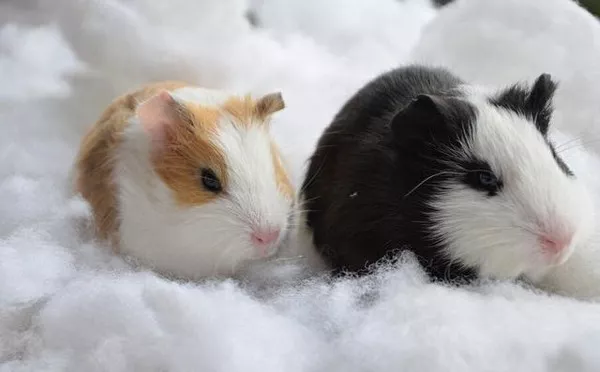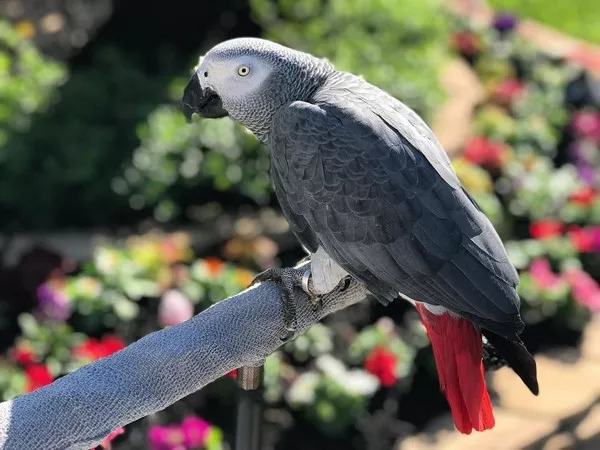Guinea pigs are often a source of confusion when it comes to classifying them within the animal kingdom. Despite their common name, they are neither pigs nor related to guinea in any geographical sense. Instead, guinea pigs are unique creatures with their own set of characteristics and living habits. This article will clarify what a guinea pig truly is, exploring their classification, physical traits, and behavioral habits, and contrasting them with rats and rabbits.
Understanding Guinea Pigs
Guinea pigs, also known as cavies (Cavia porcellus), are small rodents that are popular pets around the world. They are native to the Andean region of South America, where they have been domesticated for thousands of years. Despite their name, guinea pigs are not pigs nor do they come from Guinea. Their name likely derives from a misunderstanding or mistranslation.
Taxonomic Classification
Guinea pigs belong to the order Rodentia, making them true rodents. They are part of the family Caviidae, which includes other rodents such as capybaras and mara. This classification places them distinctly in the rodent category, differentiating them from both rats and rabbits.
Rodentia (Order): This order includes animals with a single pair of continuously growing incisors in both the upper and lower jaws. Rodents are characterized by their ability to gnaw and their generally small size.
Caviidae (Family): This family encompasses guinea pigs and related species, all of which share common features such as a compact body, short legs, and no tail.
Cavia (Genus): Guinea pigs belong to this genus, which includes species that are all similar in size and shape.
In contrast, rats are also rodents but belong to the family Muridae, which is a different branch within the order Rodentia. Rabbits, on the other hand, belong to the order Lagomorpha, which is distinct from Rodentia and includes hares and pikas.
Physical Characteristics of Guinea Pigs
Guinea pigs have several distinctive physical traits that set them apart from both rats and rabbits. Their appearance, size, and body structure all contribute to their unique identity.
Size and Body Shape
Guinea pigs are relatively small animals, typically weighing between 1.5 to 2.5 pounds (700 to 1,200 grams) and measuring about 8 to 10 inches (20 to 25 centimeters) in length. They have a rounded, compact body with short legs and a large head relative to their body size. Their bodies are covered in a dense coat of fur, which can be short or long, depending on the breed.
In contrast, rats are generally smaller in size but have a more elongated body with a long tail. Rabbits, while also small, have longer legs and ears, and their bodies are typically covered in soft, dense fur.
Fur and Coloration
Guinea pigs come in a variety of coat types and colors. Their fur can be short and smooth, long and silky, or somewhere in between, depending on the breed. Common colors include white, black, brown, and combinations thereof, often with various patterns such as spots and stripes.
Rats generally have short, smooth fur that is typically in shades of brown, gray, or black. Their fur does not vary as much in texture or length as guinea pig fur does. Rabbits have a wide range of fur types and colors, from short and dense to long and silky, with many breeds having specific fur patterns.
Facial Features and Ears
Guinea pigs have a distinctive, almost “pug-like” face with a flat snout and large, expressive eyes. Their ears are small and round, situated on the sides of their head. Their facial features give them a characteristic appearance that is quite different from both rats and rabbits.
Rats have pointed snouts, prominent ears, and large, beady eyes. Their facial structure is more elongated compared to that of guinea pigs. Rabbits have long, erect ears, a large, rounded head, and a more prominent nose, which gives them a different facial profile from guinea pigs.
Behavioral Habits of Guinea Pigs
Understanding the behavior of guinea pigs provides insight into their needs and how they interact with their environment. Their social behaviors, diet, and activity patterns are all tailored to their rodent characteristics.
Social Structure and Behavior
Guinea pigs are highly social animals and thrive in groups. In the wild, they live in large colonies with complex social structures. Domesticated guinea pigs also benefit from the company of other guinea pigs, as they can become lonely and stressed if kept alone.
Their social nature is evident in their vocalizations, which include squeaks, purrs, and whistles. These sounds are used to communicate with their companions, express excitement, or signal distress. Guinea pigs engage in behaviors such as grooming each other and cuddling, which reinforces social bonds.
Rats are also social creatures and often live in groups in the wild. They exhibit complex social behaviors and communication methods, including vocalizations and scent marking. Rabbits, too, are social animals that benefit from the company of other rabbits. They display a range of social behaviors, such as grooming and playing, similar to guinea pigs.
Diet and Feeding Habits
Guinea pigs are herbivores with a diet that primarily consists of hay, fresh vegetables, and specially formulated pellets. Their digestive systems are adapted to a high-fiber diet, which is essential for their health. They require a constant supply of hay to maintain their digestive function and prevent obesity.
Rats are omnivores and have a more varied diet that includes both plant and animal matter. They eat fruits, vegetables, grains, and protein sources. Their diet can be more flexible compared to that of guinea pigs. Rabbits, like guinea pigs, are herbivores and primarily eat hay, fresh vegetables, and leafy greens. They also need a constant supply of hay to maintain their digestive health.
Activity and Exercise
Guinea pigs are active animals that enjoy exploring their environment. They need space to roam and play, and they benefit from having toys and enrichment activities to keep them stimulated. Exercise is important for their physical and mental well-being.
See Also: How Do Guinea Pigs Know Their Name?
Rats are also very active and curious animals. They require a stimulating environment with opportunities for climbing, foraging, and exploring. Their intelligence and activity level make them engaging pets. Rabbits are similarly active and require space to hop and explore. They benefit from having a large enclosure or a safe, supervised area to exercise.
Habitat and Living Conditions
Guinea pigs, rats, and rabbits have different habitat needs based on their natural behaviors and physical characteristics. Understanding these needs helps ensure their well-being in captivity.
Guinea Pig Housing
Guinea pigs require a spacious cage with plenty of room to move around. Their habitat should include bedding that is soft and absorbent, such as shredded paper or hay, and should be cleaned regularly. Providing hiding spots and areas for them to explore is important for their comfort and happiness.
In addition to their cage, guinea pigs benefit from time outside their enclosure in a secure, guinea pig-proofed area. They should have access to fresh water and a balanced diet, as well as regular social interaction with other guinea pigs or their human caretakers.
Rat Housing
Rats need a well-ventilated cage with horizontal space for climbing and exploring. They are highly active and enjoy having toys, tunnels, and platforms in their enclosure. Like guinea pigs, rats require regular cleaning and access to fresh water and a varied diet.
Rabbit Housing
Rabbits need a large enclosure with enough space to hop, stretch, and exercise. Their habitat should include soft bedding and hiding places, as well as access to fresh hay and vegetables. Rabbits also benefit from time outside their enclosure in a secure, rabbit-proofed area where they can explore and play.
Health and Care
Proper care and attention to health are essential for all three species—guinea pigs, rats, and rabbits. Each species has specific needs and potential health issues to consider.
Guinea Pig Health
Guinea pigs are prone to certain health issues, such as dental problems, respiratory infections, and obesity. Regular veterinary check-ups, a balanced diet, and proper hygiene can help prevent and manage these issues. Providing enrichment and social interaction is also important for their mental health.
Rat Health
Rats can be susceptible to respiratory infections, tumors, and skin conditions. Regular health checks, a clean environment, and a balanced diet are important for maintaining their health. Rats also need mental stimulation and social interaction to prevent boredom and stress.
Rabbit Health
Rabbits are prone to dental problems, gastrointestinal issues, and obesity. A diet high in hay and low in sugary or starchy foods helps maintain their health. Regular veterinary visits and a clean living environment are essential for preventing and managing health issues.
Conclusion
In conclusion, guinea pigs are neither rats nor rabbits but are unique rodents with their own set of characteristics and behaviors. Their classification as rodents places them in a different category from both rats and rabbits, despite some similarities in their needs and behaviors. Understanding the distinctive traits and living habits of guinea pigs helps in providing proper care and ensuring their well-being. By recognizing the differences and similarities among these animals, we can better appreciate and meet their individual needs, making them happy and healthy companions.
Related Topics:

























